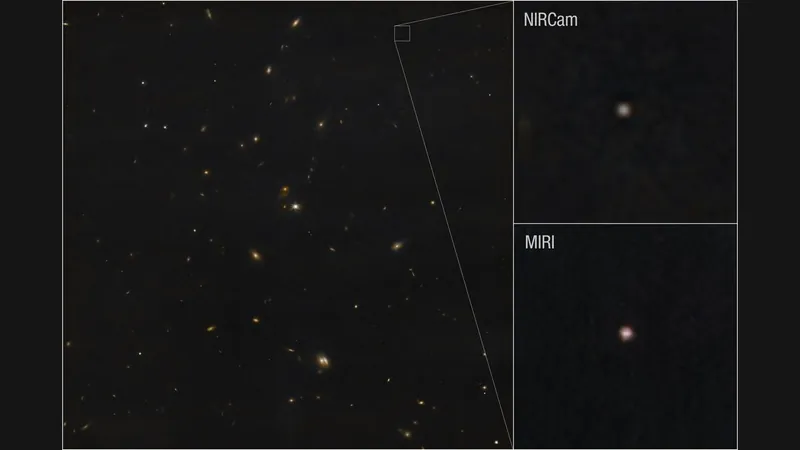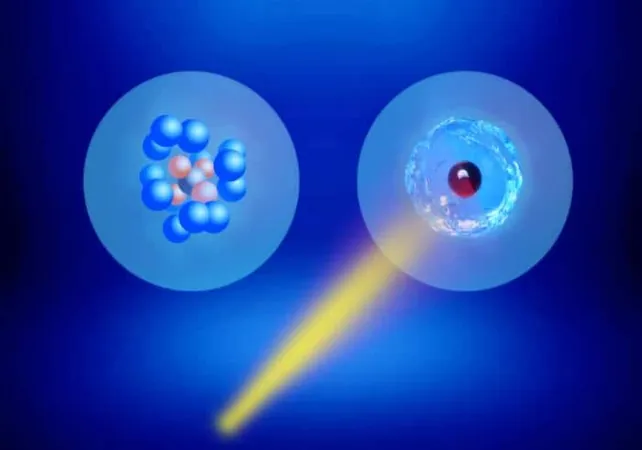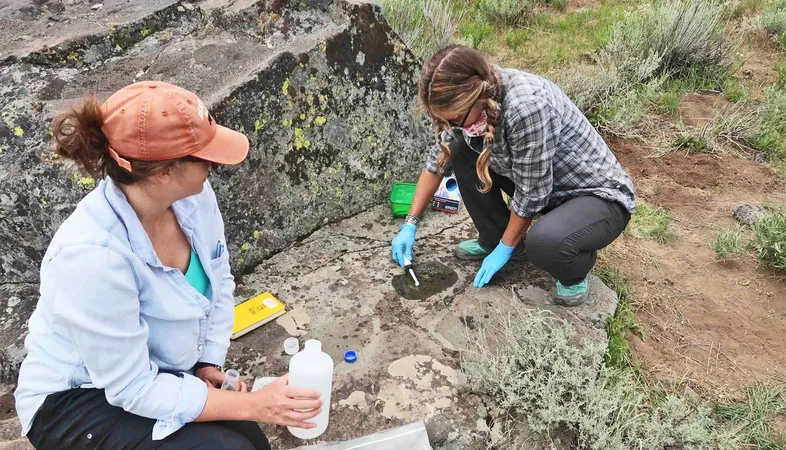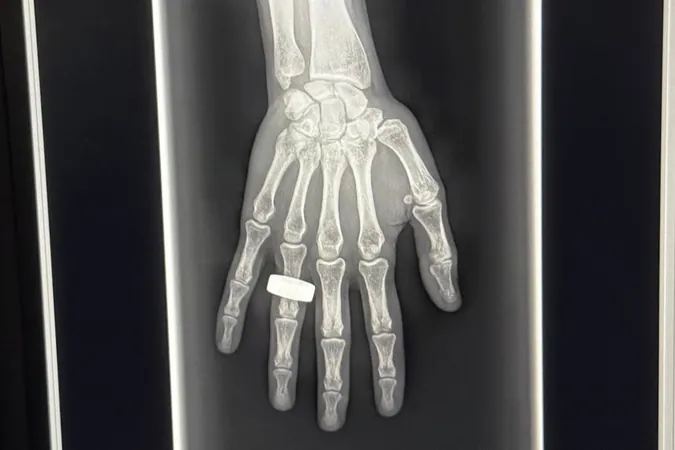
James Webb Telescope's Urgent Mission: Tracking the 'City-Killer' Asteroid 2024 YR4 as It Approaches Earth in 2032
2025-04-03
Author: Charlotte
James Webb Telescope's Urgent Mission: Tracking the 'City-Killer' Asteroid 2024 YR4 as It Approaches Earth in 2032
The James Webb Space Telescope (JWST), a cutting-edge space observatory, has initiated an urgent mission to closely monitor the notorious “city-killer” asteroid 2024 YR4. This massive space rock is set for a dangerously near encounter with Earth and the moon in December 2032, prompting a wave of curiosity and concern among scientists worldwide.
In a thrilling turn of events, the first of two emergency observations was successfully completed, revealing that asteroid 2024 YR4 could be larger and more rugged than earlier studies suggested. Initial findings indicate that the asteroid’s diameter ranges from 174 to 220 feet (53 to 67 meters). To put that in perspective, it's roughly the size of a ten-story building! This revised estimation is a bit broader than the previous ranges of 131 to 295 feet (40 to 90 meters).
In a reassuring update from NASA, it has been confirmed that 2024 YR4 no longer poses a threat to Earth, with zero probability of collision during its 2032 approach. However, it remains a cause for concern, as the likelihood of impact with the moon has increased—now estimated at 3.8%, up from a previous 2%.
“While the risk of an Earth impact has been ruled out, the chance of the asteroid hitting the Moon is not negligible,” researchers noted in a preliminary report. A follow-up observation with JWST is scheduled for May 2025, providing an additional opportunity for refining our understanding of its trajectory before the asteroid moves further into the outer solar system.
The Origin of 2024 YR4
Discovered in December 2024, 2024 YR4’s orbital path frequently crosses that of Earth, heightening concerns about potential collisions. Early analyses suggested it could strike Earth with a force equivalent to 500 Hiroshima bombs—enough to devastate a large city if it were to collide.
NASA initially estimated a 3.1% chance of an Earth impact in 2032, which was the highest probability recorded for an asteroid of this size. Thankfully, refined calculations from NASA have now diminished that risk to zero. However, the potential for a lunar collision remains, which could provide unique scientific insights into the formation of lunar craters.
Unveiling the Composition of 2024 YR4
Why the intense scrutiny? The JWST’s infrared sensing capability allows it to detect heat emitted by asteroids, granting scientists critical insights into both their structure and material composition. Unlike ground-based telescopes, which rely on reflected sunlight, JWST’s approach reveals a more accurate picture of an asteroid's attributes.
During its recent observations, the JWST tracked asteroid 2024 YR4 rotating every 20 minutes over five hours, allowing researchers to convert brightness data into mid-infrared measurements. The results indicate that the asteroid is cooler than anticipated, suggesting a composition that may lean towards being rockier than earlier assessments indicated.
The Unlikely Prospect of a Lunar Impact
While the notion of the asteroid colliding with the moon raises eyebrows, it’s important to remember that thousands of small meteors strike the lunar surface each year, leaving a plethora of craters. If 2024 YR4 does strike, it will be a rare opportunity for scientists to observe and study the creation of a lunar crater caused by a well-documented asteroid.
“We’re keeping our fingers crossed for a moon impact,” said Alan Fitzsimmons, a professor at Queen’s University Belfast. “It would offer an unprecedented chance to observe this phenomenon firsthand, allowing us to better understand how lunar craters are formed by known entities.”
As the countdown to the 2032 encounter continues, all eyes will remain on the JWST for further findings that could shed light on our celestial neighbor's fate. Will 2024 YR4 make history with its potential lunar impact, or will it gracefully pass by, leaving Earth unscathed? Only time—along with future observations—will tell!









 Brasil (PT)
Brasil (PT)
 Canada (EN)
Canada (EN)
 Chile (ES)
Chile (ES)
 Česko (CS)
Česko (CS)
 대한민국 (KO)
대한민국 (KO)
 España (ES)
España (ES)
 France (FR)
France (FR)
 Hong Kong (EN)
Hong Kong (EN)
 Italia (IT)
Italia (IT)
 日本 (JA)
日本 (JA)
 Magyarország (HU)
Magyarország (HU)
 Norge (NO)
Norge (NO)
 Polska (PL)
Polska (PL)
 Schweiz (DE)
Schweiz (DE)
 Singapore (EN)
Singapore (EN)
 Sverige (SV)
Sverige (SV)
 Suomi (FI)
Suomi (FI)
 Türkiye (TR)
Türkiye (TR)
 الإمارات العربية المتحدة (AR)
الإمارات العربية المتحدة (AR)